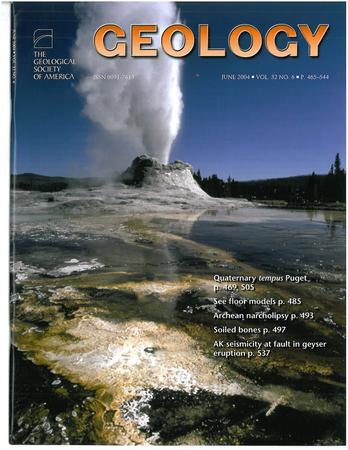Erasure of zircon rims by sediment transport after two orogenic cycles
IF 4.6
1区 地球科学
Q1 GEOLOGY
引用次数: 0
Abstract
The physio-chemical resilience of zircons has been key in their increasing application to deciphering geological processes through Earth history. However, zircons are not immune to mechanical abrasion and chemical alteration. This study quantifies the loss of zircon rims from the Brahmaputra source-to-sink (S2S) system, which drains the Himalayan-Tibetan orogen and transports sediment to the deep Bay of Bengal over a total vertical relief of some 7000 m. During sediment transport from this S2S system, median zircon rim thickness decreases by ∼50%, suggesting that information contained in the rim would be lost after reworking of grains through two orogenic and associated sedimentary cycles. To validate this discovery at a global scale, we apply Monte Carlo weighted bootstrap resampling of a global detrital zircon core and rim age data set. After the impacts from changing tectonic regime (increasing metamorphic rim since the late Neoproterozoic and rim formation during continental collision events) were decoded, proportions of rim versus core increase over time and clearly show that old rims have been erased after several rounds of sediment recycling in response to multiple orogenic cycles. Our work suggests that crustal information archived in zircons can be lost during surficial sediment transport in addition to deep crustal-recycling processes such as lithospheric delamination, subduction erosion, and sediment subduction.两次造山旋回后沉积物输运对锆石边缘的擦除
锆石的物理化学弹性是其越来越多地应用于破译地球历史上的地质过程的关键。然而,锆石并非不受机械磨损和化学蚀变的影响。在S2S体系的沉积物搬运过程中,中位锆石边缘厚度减少了约50%,表明在两次造山旋回和相关沉积旋回对颗粒进行改造后,边缘所含的信息丢失了。为了在全球范围内验证这一发现,我们对全球碎屑锆石岩心和边缘年龄数据集进行了蒙特卡罗加权自举重采样。在解析了构造机制变化的影响(新元古代晚期以来变质边缘的增加和大陆碰撞事件期间边缘的形成)后,边缘与核心的比例随时间而增加,并清楚地表明,在多次造山旋回的响应下,经过几轮沉积物再循环,旧边缘已被抹去。我们的研究表明,除了岩石圈剥离、俯冲侵蚀和沉积物俯冲等深层地壳再循环过程外,锆石中保存的地壳信息也可能在表层沉积物运输过程中丢失。
本文章由计算机程序翻译,如有差异,请以英文原文为准。
求助全文
约1分钟内获得全文
求助全文
来源期刊

Geology
地学-地质学
CiteScore
10.00
自引率
3.40%
发文量
228
审稿时长
6.2 months
期刊介绍:
Published since 1973, Geology features rapid publication of about 23 refereed short (four-page) papers each month. Articles cover all earth-science disciplines and include new investigations and provocative topics. Professional geologists and university-level students in the earth sciences use this widely read journal to keep up with scientific research trends. The online forum section facilitates author-reader dialog. Includes color and occasional large-format illustrations on oversized loose inserts.
 求助内容:
求助内容: 应助结果提醒方式:
应助结果提醒方式:


